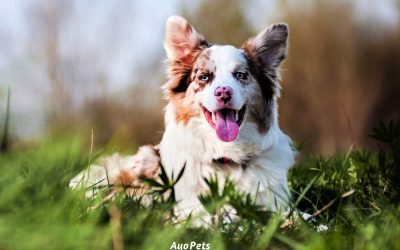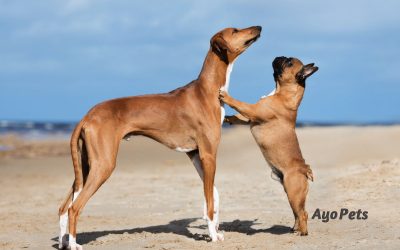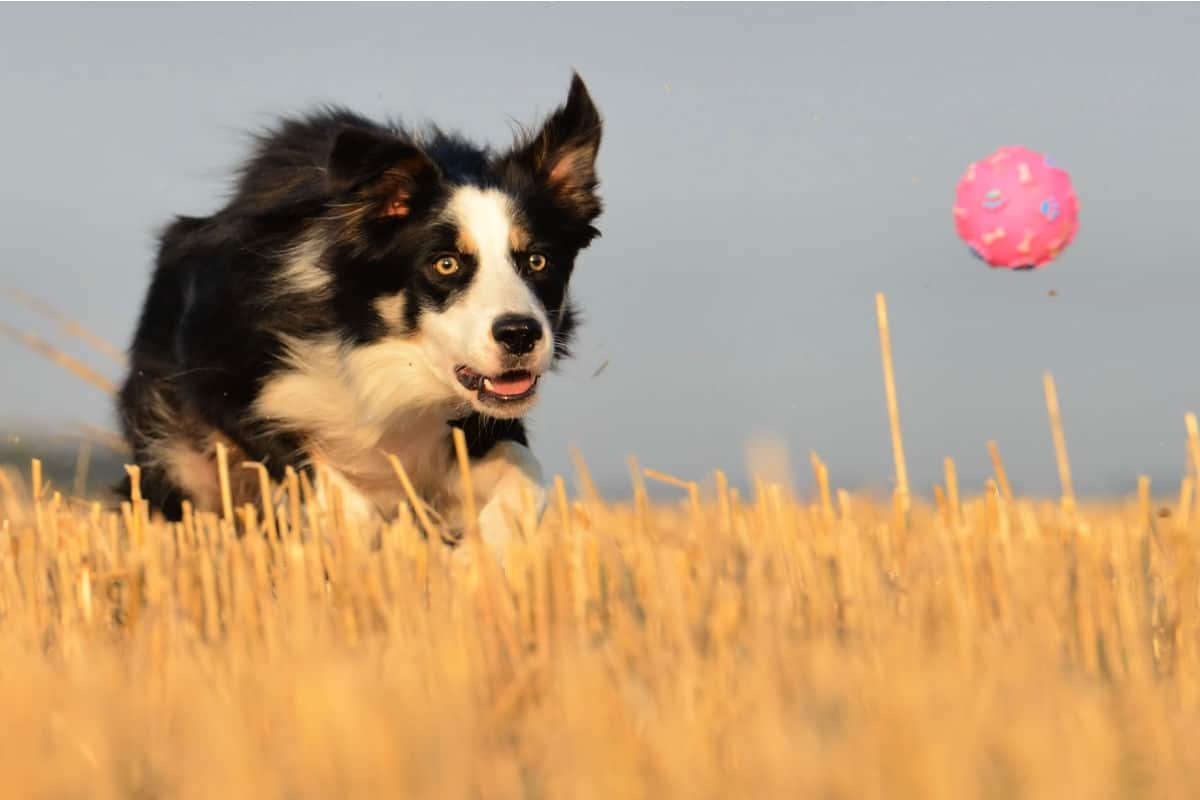Beagles are known for their friendly, easy going nature. I used to love taking my friend’s beagle out on long hikes through the forest. If you’re wondering if your beagle is a purebred or not, there are a few things you can do to find out.
So, how do you tell if your beagle is purebred? You can get a good idea if a beagle is purebred by looking at its body. Most purebred beagles have some white in their tail and four white paws. Also look to see if the body coloring, ears, weight and height are typical of a purebred. To be 100% sure, get a dog DNA test or buy from a breeder who has a DNA Profile Number from the AKC.
There are many signs that can tell you if your beagle is purebred, you just need to know what to look for. But even if your dog has all these signs and registration papers, it doesn’t guarantee that it’s purebred. Here are some things to look for when trying to tell if your beagle is purebred:
Typical physical characteristics of purebred beagles
Check the dog’s tail
Beagles have a high-set tail that often stands upright, especially when their nose is down to the ground following a smell trail. The tail has a slight curve in it.
Most purebred beagles have some white in their tail, even if it’s just a few hairs at the end. This white tip was bred into beagles so that their tail would be visible in the long grass during a hunt. The white tips helped hunters know where the dogs were all the time.
Check the dog’s paws
Beagles typically have four white paws.
Check the dog’s head
Purebred beagles usually have a thin white stripe along the front of the top of their heads. Mixed breeds might not have this stripe on their forehead.
Check the dog’s front legs
Purebred beagles have straight front legs.
Check the dog’s body coloring
The American Kennel Club (AKC) recognizes the following colors on beagles: black, white, tan, red, redtick, blue, bluetick, lemon, and fawn.
The blue color refers to a soft black tone, that looks blue. The ‘tick’ in redtick and bluetick means freckle-like spots on the beagle’s coat.
True beagles have two or three colors on their fur.
Check the dog’s ears
Beagles have long fluffy ears that hang lower than their face. Their wide ears cover most of the sides of their head.
Check the dog’s height and weight
Beagles change slowly and steadily between the ages of 6 months and 18 months. All dogs, like people, have growth spurts, so there’s no exact weight for beagles at each age.
The American Kennel Club (AKC) recognizes two beagle heights: 13” (33 cm) and 13-15” (33-38 cm). If your beagle is slightly smaller or bigger, it doesn’t mean that your beagle isn’t purebred. There will always be some dogs that are slightly bigger or smaller than the norm.
To measure a dog’s height, get out a measuring tape. Dog height is measured from the ground to the highest point of the shoulder blade. This point is called the withers.
A typical 13” high beagle should weigh less than 20 pounds (9 kg) according to the AKC. The larger size beagle of 13-15” (33-38 cm) high usually weighs about 23-30 pounds (9-13.5 kg).
The beagle breed is prone to gaining weight if they don’t get their recommended hour of active exercise each day.
Typical behaviors and traits of beagles
If your dog is a purebred beagle, it will probably show some of the typical beagle personality habits and traits. Beagles were bred for hunting in packs and are wonderful family dogs with energetic personalities.
Here are some typical behaviors of purebred beagles:
Beagles follow their noses and like to escape
If your beagle takes every chance it gets to escape from your garden and go off exploring with their nose on the ground and tail in the air, then your dog is a typical beagle. Beagles are famous for being escape artists.
If you have a beagle, make sure there are no gaps in the fence where it can escape and find out HERE about putting in a dog microchip.
Beagles shed all year
Being a short-hair breed, beagles shed moderately all year and quite heavily in Spring. If your dog’s coat is smooth and dense, getting thicker during the colder months, and has 2 to 3 colors in it, then it has a typical beagle coat.
Beagles need a lot of exercise
Typical purebred beagles need a lot of exercise – at least one hour a day of active play. They were bred for hunting and exploring, so they need to be able to run and get out all their energy.
If beagles don’t get enough exercise, they become frustrated and destructive. When taking them out for a run or to play somewhere outside your garden, keep your beagle on a leash as they are easily distracted and won’t hear you calling them back once they’re on a hunting trail with their nose.
Beagles bark and howl quite a bit
Beagles love to communicate what they’re feeling vocally. In fact, they’re famous for being loud (just ask anyone who’s lived next door to one!).
If you leave your beagle alone in the garden too long, it will be barking and howling for attention very quickly.
Buying a purebred beagle from a good breeder
If you are getting a beagle and want a purebred dog, then it’s best to use a reputable breeder. To stand the best chance of getting a purebred dog with the right beagle genes, here are some questions to ask the breeder to make sure they are responsible and reputable:
- Do you raise the puppies inside your home?
- Do you belong to the National Beagle Club of America?
- Do you show your dogs in events?
- Do you take part in the voluntary DNA program run by the American Kennel Club? If yes, can I see the DNA Profile Numbers for your dogs?
- Do you socialize your puppies?
- Do you screen your beagle puppies for hip problems? If so, can I see the results?
If the breeder answers yes to all or most of the questions above, and can give you proof, then there’s a good chance that it’s a responsible breeder you can probably trust.
Also make sure that the breeder doesn’t sell puppies before 8 weeks of age and that he/she asks you questions too, to make sure they sell puppies to responsible owners.
Never buy puppies from a pet store, whether you want a purebred dog or not. There’s no way of telling where the dog came from or how responsible the breeder is.
Ask your vet if your beagle is a purebred
If you are wondering if your beagle is a purebred, ask your vet what they think the next time you’re there for a visit. Your vet will have had training and hands-on experience with beagles, and they can tell you if your beagle has all the signs of being a purebred or if it is probably a mixed breed.
Again, this is only the vet’s opinion and is not a definitive answer. See below for the only way to be 100% sure that your beagle is purebred…
Get a dog DNA test
The only thing that makes a purebred dog is the genes (DNA), nothing else. It doesn’t matter if the dog looks like a purebred beagle or not, or if the vet thinks he is purebred.
Even if the beagle is registered with the American Kennel Club (AKC), it doesn’t mean that the dog is purebred or that the dog’s parents are who the breeder says they are.
Michele Welton, dog trainer and author, sums this up nicely:
Always remember that GENES make a dog purebred. The presence or absence of registration papers doesn’t change the genes (DNA) inside a dog. He can be purebred without having papers – and sadly, he can have papers without really being purebred. Only a DNA test can tell you whether he’s really purebred.
Michele Welton, YourPurebredPuppy.com
The only way to be 100% sure that your beagle is purebred is by getting a dog DNA test done. If you want to find out how much they cost and what they test for, click HERE to read my full article on what dog DNA tests cost and test.
Some breeders are now taking part in the AKC’s voluntary program for dog DNA testing. Dogs that have been tested and are found to have the genes/DNA for a purebred beagle are given a DNA Profile Number. The breeder will be able to provide you with this information if they have had the dog’s DNA tested.
A dog DNA test is painless, can be done at home quickly and easily, and the results will be emailed to you within a few weeks. This is a simple answer to a tough question!






